Oil and Gas Simulation: Enhancing Workforce Training and Development
The oil and gas industry is a complex and ever-evolving field, demanding a highly skilled and adaptable workforce. However, traditional training methods often struggle to keep pace with the industry’s changing demands. This article explores the challenges of traditional training, the rise of oil and gas simulation as a solution, and its numerous benefits for workforce development.
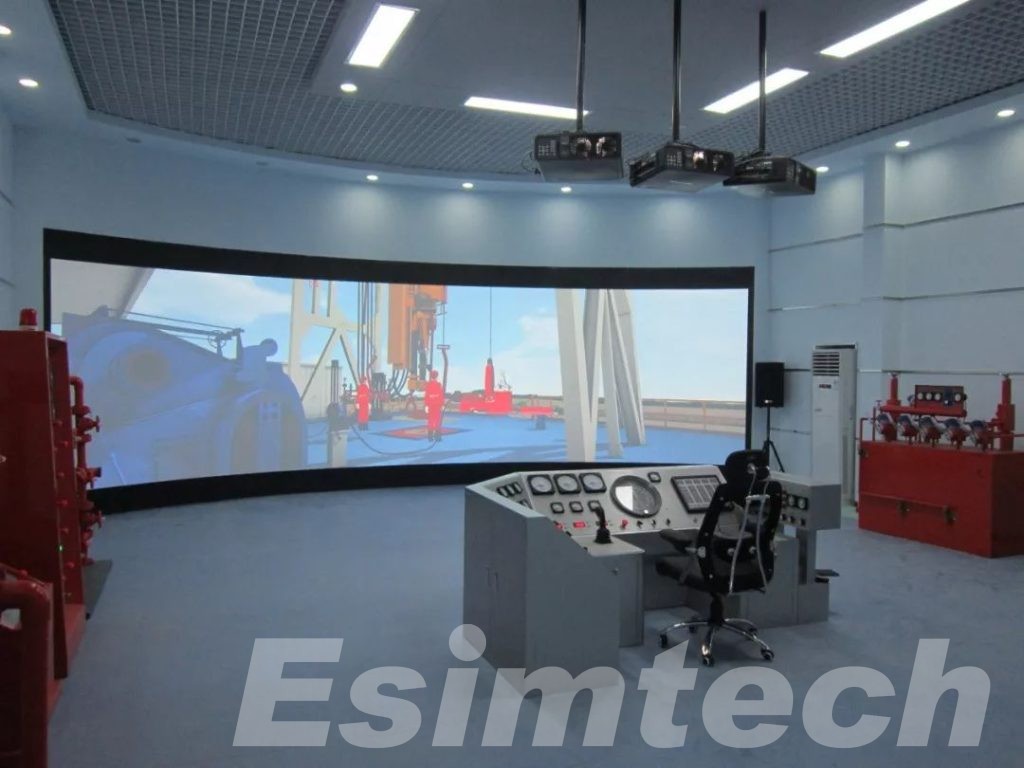
Challenges of Traditional Oil and Gas Training Methods
The oil and gas industry operates in a high-risk environment, demanding a skilled and qualified workforce that can handle complex situations safely and effectively. However, traditional training methods often struggle to meet these demands due to several inherent limitations:
1. Cost and logistical challenges:
- On-site training: Setting up and conducting training at real-world facilities like drilling platforms or refineries can be extremely expensive. This includes costs for equipment rental, travel, accommodation, and instructor expertise.
- Classroom training: While less expensive than on-site training, traditional classroom sessions lack the hands-on experience crucial for developing practical skills. Additionally, scheduling classroom training can be challenging, creating disruptions in workflow and potentially impacting productivity.
- Limited availability of experienced trainers: The industry often faces a shortage of experienced personnel who can dedicate time and expertise to conducting training sessions, further escalating costs and limiting training opportunities.
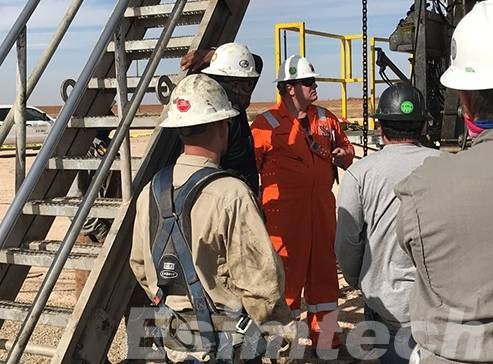
2. Limited opportunities for practical experience:
- Theoretical knowledge vs. practical application: Traditional methods often rely heavily on theoretical knowledge transfer through lectures and manuals. While this is crucial, it falls short in providing opportunities for trainees to apply this knowledge in practical scenarios and develop critical skills like decision-making, problem-solving, and situational awareness.
- Safety concerns: Training real-world scenarios can be inherently dangerous, posing substantial safety risks to both trainees and instructors. This can limit the scope and complexity of training activities, hindering the development of crucial skills needed to handle real-world situations effectively.
3. Ineffectiveness in addressing the needs of a diverse workforce:
- One-size-fits-all approach: Traditional methods often employ a standardized approach, neglecting individual learning styles and varying levels of experience within the workforce. This can lead to inefficiencies, as trainees with different needs might not fully grasp the concepts or struggle to apply them practically.
- Limited accessibility: Traditional training methods might not be easily accessible to everyone, particularly for geographically dispersed workforces and individuals with disabilities. This can create inequities in training opportunities, hindering the development of a diverse and capable workforce.
These limitations of traditional training methods highlight the need for innovative solutions like oil and gas simulation, which address these challenges by providing cost-effective, safe, and learner-centric training experiences that equip the workforce with the necessary skills to navigate the complexities of the oil and gas industry.
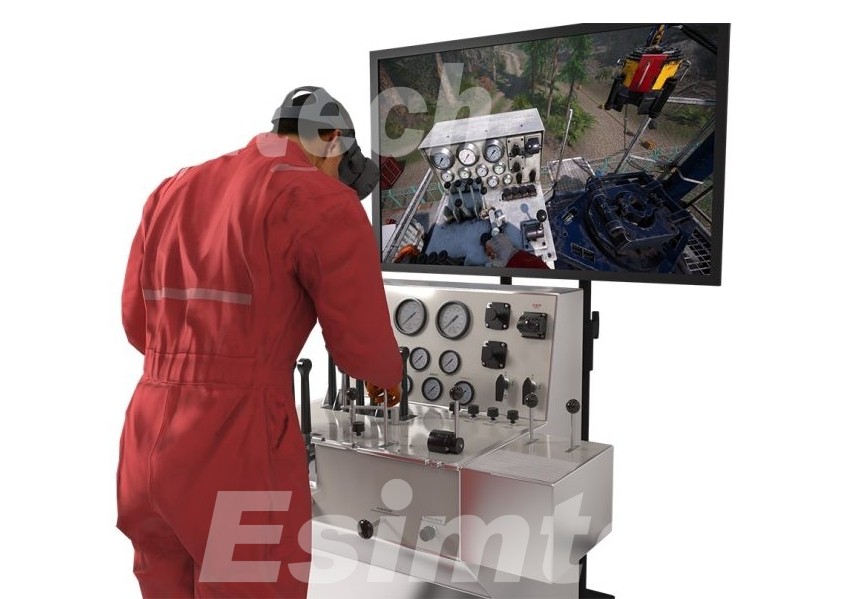
The Rise of Oil and Gas Simulation for Training
The rise of oil and gas simulation for training can be attributed to several factors. Firstly, advancements in computer technology have enabled the development of increasingly sophisticated and realistic simulations, offering immersive virtual environments that closely mimic real-world scenarios.
Secondly, the growing cost pressures faced by the industry have made traditional training methods less sustainable. Simulations offer a cost-effective alternative, eliminating the need for expensive equipment, travel, and dedicated training facilities.
Additionally, the increasing focus on safety in the industry has highlighted the limitations of traditional training methods, which can be inherently risky. Simulations provide a safe environment for trainees to learn and practice critical skills without the associated risks of real-world situations.
Finally, the growing demand for a skilled workforce, coupled with the need to address the knowledge gap between experienced workers and new recruits, has created a strong demand for innovative and effective training solutions.
Oil and gas simulation effectively addresses this need by providing engaging and immersive training experiences that bridge the skill gap and prepare workers for the dynamic and demanding oil and gas industry.
Examples of Oil and Gas Simulation Applications
Oil and gas simulation are vital tools in the industry for various operations, including drilling, well control, production, transportation, downhole operations, etc. Here’s a more detailed breakdown of examples within each category:
1. Drilling and Well Control
- Drilling Simulation: These applications simulate the process of drilling a well, including the behavior of the drill bit, formation characteristics, and the interaction between the drilling fluid and the wellbore. They help engineers optimize drilling parameters such as weight on bit, rotary speed, and mud properties to minimize drilling time and costs.
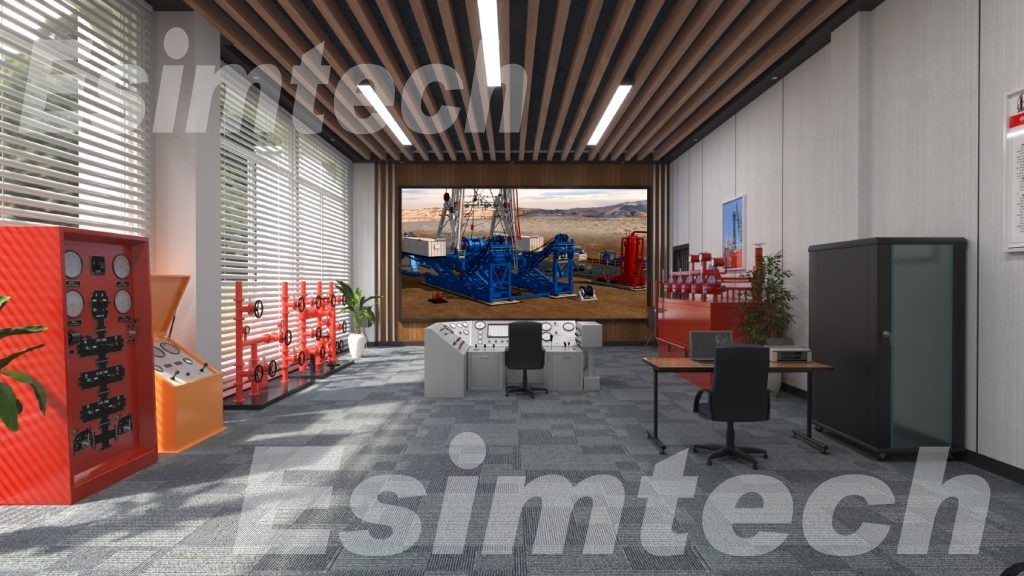
- Wellbore Stability Analysis: Simulation tools predict the stability of the wellbore during drilling by modeling geomechanical properties of the formations. They identify potential issues such as borehole collapse, stuck pipe, or lost circulation and suggest mitigation strategies.
- Blowout Prevention Simulation: Well control simulators replicate various well control scenarios, including kicks and blowouts. They train drilling crews to respond effectively to unexpected pressure changes in the wellbore, ensuring safety and minimizing environmental risks.
2. Oil and Gas Production and Transportation
- Reservoir Simulation: Reservoir simulators model fluid flow within the subsurface reservoir to predict production rates, ultimate recovery, and reservoir behavior over time. They incorporate geological data, fluid properties, and well configurations to optimize field development strategies.
- Production Optimization: These applications analyze production data to identify opportunities for improving efficiency and maximizing hydrocarbon recovery. They help operators adjust well settings, artificial lift systems, and surface facilities to optimize production rates while minimizing operating costs.
- Pipeline Simulation: Pipeline simulators model fluid flow and pressure dynamics in oil and gas pipelines to optimize transportation logistics and ensure pipeline integrity. They assess factors such as flow rates, pressure drops, and fluid composition to prevent issues like corrosion, erosion, and hydrate formation.
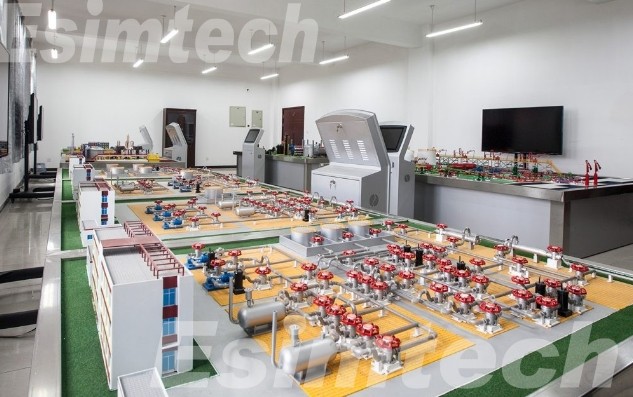
3. Downhole Operations
- Drilling Fluid Simulation: Simulation tools model the rheological properties of drilling fluids and their interactions with downhole formations. They predict the behavior of drilling muds under different conditions to optimize fluid selection and minimize formation damage.
- Hydraulic Fracturing Simulation: These applications simulate the fracturing process to optimize well stimulation treatments and enhance hydrocarbon recovery from unconventional reservoirs. They predict fracture propagation, geometry, and conductivity to design optimal fracture treatments while minimizing environmental impact.
-1-1024x576_副本.jpg)
- Well Intervention Simulation: Simulation tools replicate various well intervention operations, such as workovers, coil tubing operations, and well cleanouts. They assess factors like wellbore conditions, equipment performance, and operational risks to plan interventions efficiently and safely.
Overall, oil and gas simulation applications play a crucial role in improving operational efficiency, safety, and environmental sustainability across the entire upstream value chain. They enable engineers and operators to make informed decisions and mitigate risks in complex and challenging operating environments.
Benefits of Using Oil and Gas Simulation
Oil and gas simulation offers a multitude of advantages over traditional training methods, making it a game-changer for workforce development:
1. Cost Efficiency: Simulation eliminates the need for expensive real-world training setups, including travel, equipment rental, and facility management. This translates to significant cost savings for companies, especially when training large workforces or geographically dispersed teams.
2. Enhanced Skills Development: Unlike passive learning methods, simulations provide an immersive and interactive environment for trainees to actively engage with scenarios, experiment with different approaches, and learn from mistakes without real-world consequences. This hands-on experience is crucial for developing critical skills, building confidence, and fostering problem-solving abilities.
3. Improved Safety Culture: Exposing trainees to potential risks and emergency situations in a controlled and safe simulated environment allows them to practice critical safety protocols and decision-making skills. This significantly enhances workplace safety by improving preparedness and reducing the likelihood of accidents.
4. Increased Accessibility and Flexibility: Simulations offer a flexible and accessible training solution. Trainees can access learning modules remotely, eliminating geographical limitations and allowing for individualized training schedules. This flexibility caters to diverse training needs and ensures continuous learning opportunities for all employees.
5. Data-Driven Insights: Modern simulation platforms are equipped with advanced analytics capabilities. These tools track trainee performance, identify areas for improvement, and provide valuable data for personalized training plans. This data-driven approach ensures that training programs are constantly evaluated and refined to maximize their effectiveness.
By combining cost-effectiveness, enhanced learning, improved safety, increased accessibility, and valuable data insights, oil and gas simulation is paving the way for a more skilled, adaptable, and future-proof workforce in the industry.
Conclusion
Oil and gas simulation is changing how workers are trained. It’s affordable, safe, and interesting, helping workers learn the ropes in this tough industry. As the industry grows, simulation training will become even more common. This means the future workforce will be well-trained, flexible, and ready for whatever comes their way.
